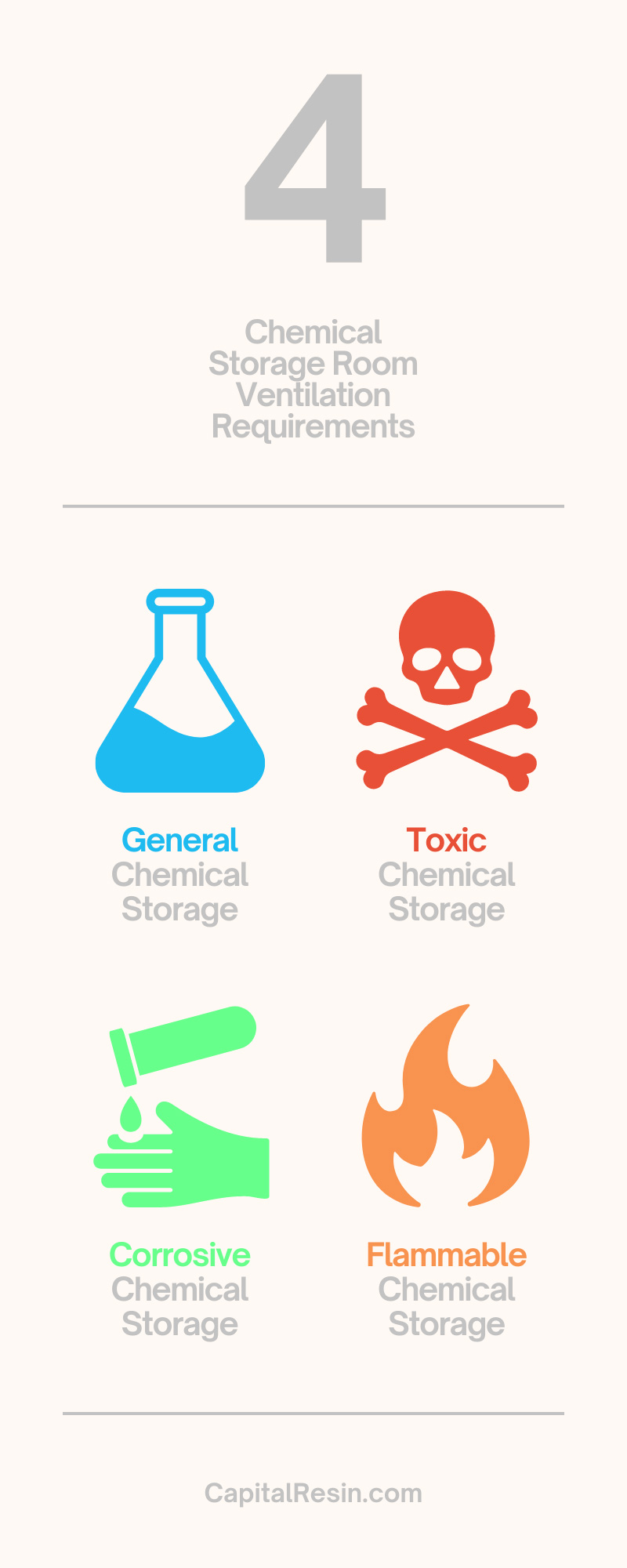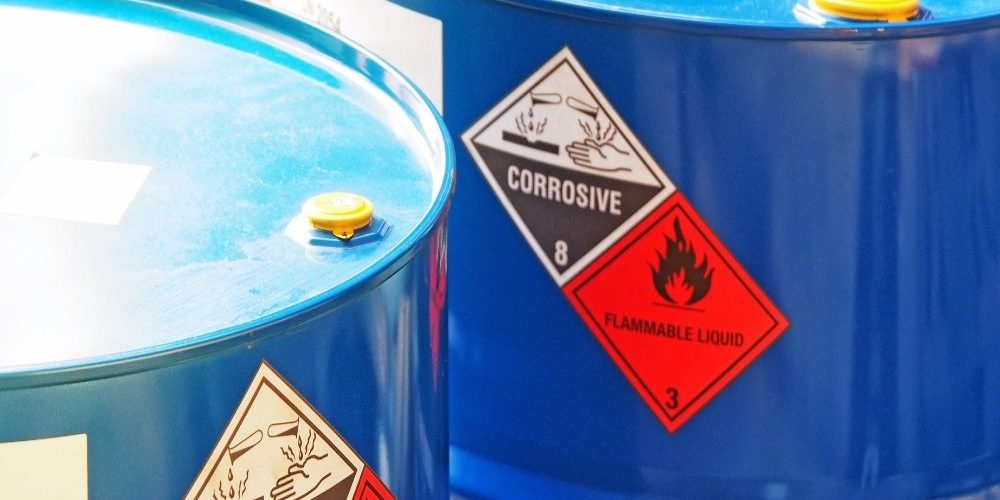In order to ensure chemicals are safely stored away in a storage room, it is absolutely necessary that the room be properly ventilated to prevent issues like hazardous fumes or fire hazards. If you are preparing to invest in a proper storage room for custom toll processing chemicals, then you should take into consideration these four chemical storage room ventilation requirements to ensure the storage room is safe and effective.
General Chemical Storage
First and foremost, the location you choose to place your storage is paramount to effective ventilation and the kind of environment your chemicals will be stored away in. The ideal placement of your storage unit is in a cool, dry location out of any direct sunlight. Furthermore, your chemicals should be nowhere near any kind of heat or ignition source. Not only does this create the risk of your storage becoming an inferno, but fluctuating temperature can also be dangerous by potentially creating a greater amount of vapor emissions than your ventilation system can effectively filter out.
When picking out equipment for your chemical storage room, such as the cabinets, you should inspect how they handle ventilation. It’s important that cabinets and other equipment strike a balance between an effective ventilation system and structural integrity. After all, the best ventilation systems in the world don’t matter if they weaken the structural integrity and your equipment breaks down as a result.
Furthermore, chemicals should never be stored above eye level. Storing chemicals out of reach and out of sight can be dangerous, as it’s at the greatest risk of being dropped onto a person trying to retrieve substances from elevated shelving. Keeping chemicals at eye level or below also makes identifying chemicals and organizing them much easier. Because of how delicate chemicals can be, every chemical should have an identifiable and clearly labeled storage space where chemicals are returned after use. Proper storage further includes the segregation of chemicals that would be disastrous should they interact with each other or have different ventilation needs.
In regard to mechanical exhaust ventilation systems, they should consistently provide at least six air changes per hour as a baseline of how well-ventilated your storage rooms need to be. Other local exhaust systems will become necessary if processes like dispensing take place within the storage area.
Toxic Chemical Storage
When it comes to storing more potently toxic materials, ventilation is even further emphasized to prevent a concentration of toxic fumes or substances from accumulating in the breathing space of anyone operating within the storage unit.
For the best ventilation results and safest conditions, cabinets should be vented outside of the building into the external atmosphere. However, rather than just dumping toxic substances into the surrounding environment, your ventilation system should be able to facilitate the safe disposal of toxic vapors, fumes, or micro-substances like dust without ever being allowed to enter the storage room in the first place—i.e., a ventilation system that transports fumes and substances out of the building without ever entering the storage room.
Corrosive Chemical Storage
For corrosive chemical materials, the most important chemical storage room ventilation requirement lies within the materials you use. To prevent your ventilation system from quickly corroding into disrepair, you will absolutely need to invest in corrosion-resistant materials. This is especially important in metal fans that are key in dispersing corrosive vapors, gases, and mists. Similarly, the ventilation ducting will need the same corrosion-resistant materials the fans use in order to properly contain and transport corrosive vapors and fumes without quickly corroding themselves.
Corrosive chemicals should always be stored in their own separate cabinet, away from other kinds of chemicals. Not only is this to accommodate them with the proper corrosive-resistant materials, but in the event corrosion takes place, it eliminates further issues by adding toxic or flammable substances as a factor in case of disaster.
Flammables Storage
When storing away flammable materials and chemicals within cabinets, the ventilation system should prioritize exerting fumes outside into the external atmosphere and away from any possible heat or ignition sources or where people are likely to congregate. However, when considering what may be a potential ignition source, you must think beyond open flames. This is because an ignition source may be unintentional, such as a mechanical fan potentially creating a spark should the blades hit something. To prevent this, ensure fans have non-sparking blades and shrouds and that all electricals are routinely inspected and maintained to prevent sparks and electrical failures.
Like with corrosive materials, the ducts need to be resistant against the corrosive effect of fumes and vapors, but should additionally contain the same protection as cabinets when it comes to fire. In the event that flammable chemicals do ignite, you want the cabinet and ductwork to contain the blaze as much as possible so the fire can’t spread and lash out at anyone working in the area. For material recommendations, steel or stainless steel pipes are incredibly durable, and stainless steel is especially resistant to corrosion and very easy to clean. In contrast, you should avoid PVC piping at all costs, as they are incapable of handling extreme temperatures and will most certainly break or melt in the event of a fire.
A final footnote that is important to mention is that flammable vapors are notably denser than air. Rather than rising, the vapors will accumulate on the floor. This detail can be easily overlooked, but it is important to remember so that you can design your ventilation system accordingly. In this case, extraction systems should also be low to the ground to ensure these dense vapors are all dispersed and removed from the storage room.
Choosing Chemical Cabinets
Taking the above considerations to heart, you should have a better idea of what kind of cabinets you should outfit your storage room with and the necessary ventilation systems you need to incorporate in the storage room’s design.
While these considerations are a good guideline for keeping your employees safe while handling different kinds of chemicals and substances, you should always follow the advice and guidance of your chemical’s MSDS for storage and handling, especially for chemicals with specific needs or circumstances.








